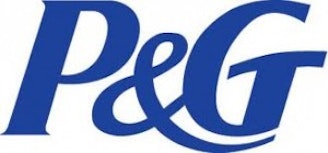Dividend stocks are everywhere, but many just downright stink. In some cases, the business model is in serious jeopardy, or the dividend itself isn’t sustainable. In others, the dividend is so low, it’s not even worth the paper your dividend check is printed on. A solid dividend strikes the right balance of growth, value, and sustainability.
Today, and one day each week for the rest of the year, we’re going to look at one dividend-paying company that you can put in your portfolio for the long term without too much concern. This isn’t to say that these stocks don’t share the same macro risks that other companies have, but they are a step above your common grade of dividend stock. Check out last week’s selection.

This week, we’ll turn our attention to a dominant name in personal-care products, The Procter & Gamble Company (NYSE:PG), and I’ll show you why this stock makes a strong case to be a staple in your income portfolio.
Trouble for personal care products?
What a difference a year makes for P&G! Last year the personal care-products company responsible for bringing you Tide laundry detergent, Crest toothpaste, Gillette razors, Pampers diapers, and dozens of other brand-name items struggled under not one, but two consecutive earnings warnings. P&G was weighed down by consumers’ tight spending habits that had them trading down to lesser-priced non-brand-name items. In addition, unfavorable currency exchange rates in Europe were lopping off significant chunks of profit when converted back into dollars. P&G actually had quite a few Wall Street analysts questioning whether its glory days were now gone.
But I knew better, and so did many investors who saw P&G hardly budge following each warning.
For starters, P&G’s problems weren’t solely related to P&G — they were sectorwide. Church & Dwight Co., Inc. (NYSE:CHD), for instance, operates globally and was forced to lower its forecast last year after consumers began buying larger amounts of lower-margin items, and following a pricing war with P&G in the laundry detergent aisle. Kimberly Clark Corp (NYSE:KMB) , the maker of Huggies diapers and Kleenex tissues, struggled as well with foreign currency translation, having $55 million in full-year profits evaporate because of an unfavorable exchange rate. The point is this was a sectorwide struggle, not just a P&G problem.
The P&G advantage
Whereas some view P&G’s glass as half empty, P&G ran with this weakness as an opportunity to regain market share and further fortify its brand image. Over the past couple of quarters, it’s done this through a number of key initiatives.
As I referenced earlier, in some cases it involved a short-term price drop to lure previous customers back to the brand. There’s a certain sense of Americana associated with Tide detergent that a small price cut certainly helps to sell. Cost-cutting on the job front also helps. P&G is reducing a grand total of 5,700 jobs worldwide and cutting back on excess domestic expenses while, at the same time, also boosting its headcount in overseas markets where growth rates are often in the double digits. Divesting has been yet another source of profits for P&G. By ridding itself of non-core assets — like selling the Pringles chip brand to Kellogg Company (NYSE:K) for $2.7 billion — P&G is free to focus its efforts (and its boatload of cash) on various growth initiatives.

